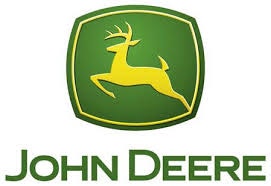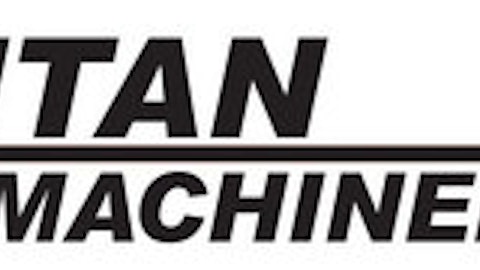Deere & Company (NYSE:DE)’s brand name has permeated the agricultural equipment industry for 175 years, and its strong dealer network supports its high-quality products. To buoy its industry leadership, the company must generally assign more resources than competitors do toward research and development.
Best known for its John Deere equipment, Deere & Company (NYSE:DE) holds an estimated 50%-plus share of the North American farm equipment market thanks to its machinery’s high resale value and solid support network. Elsewhere, Deere & Company (NYSE:DE) faces more substantial competition from CNH Global NV (NYSE:CNH) and AGCO Corporation (NYSE:AGCO), but nonetheless remains the largest global player. Typically, Deere enjoys wider profitability during market upswings and more-muted income declines during downturns than its rivals, stemming from its geographically diversified operations and manufacturing efficiency.
Agricultural and construction equipment manufacturer CNH Global NV (NYSE:CNH)–the product of a 1999 merger of industry heavyweights Case and New Holland–offers formidable opposition to industry leaders such as Deere & Company (NYSE:DE) and Caterpillar.
Deere’s dominance in agricultural equipment
CNH Global NV (NYSE:CNH) typically garners about 80% of its revenue from agricultural equipment such as tractors and combines. In this business, the firm competes primarily against Deere & Company (NYSE:DE) and AGCO, and holds the second position in global market share.
Although the company enjoys solid brand recognition in North America, Latin America has driven the majority of this segment’s recent growth thanks to a solid dealer network and market expansion. That said, although I think the region’s long-run growth will provide positive prospects for all market participants, tractor unit volumes have declined in recent quarters while Deere & Company (NYSE:DE) has made inroads with new products resulting in market share gains.
Other developing economies also offer outsized opportunities due to continued mechanization and shifting consumer preferences. Headwinds such as credit availability in Russia and a preference for lower-horsepower tractors in India, however, may limit CNH’s upside in these regions.
The vast majority of CNH’s revenue stems from its agricultural equipment business, where farm income, weather, and government action can create headwinds. In its construction equipment business, the company focuses primarily on residential construction, and faces risks such as depressed housing starts and high interest rates.
CNH’s net debt/capital has improved in recent years, but its required cash management by parent company Fiat Industrial adds additional risk. Similarly, Fiat Industrial’s upcoming merger with CNH (originally announced in May 2012) isn’t likely to offer a sizable premium to the prevailing market price for minority shareholders.
Though overshadowed by Deere & Company (NYSE:DE) and CNH Global in the North American agricultural equipment market, AGCO Corporation (NYSE:AGCO) is a worthy competitor abroad. I think the company’s renewed focus on internal profitability and efficiency rather than acquired growth will help generate continued economic profitability as equipment end markets improve.
Officially formed in 1990 as a management buyout, AGCO Corporation (NYSE:AGCO) began a merger binge that culminated with international tractor manufacturer Valtra in 2004. During these 14 years, the firm bought more than 20 outside companies, spending nearly $2.5 billion, or 4% of total sales.
From 2004 through mid-2011, the company entered into only two deals (spending about $86 million), but earmarked $940 million to purchase grain-storage and livestock-system manufacturer GSI in October 2011, and another $31 million in early 2012 to purchase a portion of South American equipment OEM Santal. Some of these mergers have proved better than others.
Growth and profitability forecast
Deere’s construction machinery business will continue to benefit from improved U.S. construction spending in the near term, but economic uncertainty and costs associated with starting new facilities have led to reduce fiscal 2013 revenue and profitability outlook for the segment.
On the farm equipment side, the 2012 U.S. harvest suffered from severe drought and low per-acre yields that have hampered total production but increased crop prices at a higher magnitude. As such, the company enjoyed strong full-year 2012 (fiscal year ending October) sales growth, stemming from double-digit agricultural equipment increases and even stronger construction equipment gains.
The USDA also currently expects lofty crop prices through the 2012-13 growing season as a result of continued shortages. Deere’s management recently noted that sales should remain robust in 2013 because of positive pricing actions, new product launches, and further farmer spending.
However, continued difficult European economic sentiment, difficult year-over-year comparisons following several strong years in the U.S., and the potential for lower farm cash receipts have me slightly more cautious on the top line in both 2013 and 2014.
Still, strong operating margins in the near term due to solid cost control, aforementioned price actions, and higher deliveries of large farm machinery. Deere’s midcycle margins at about 11% is expected. While lower than near-term trends (and management’s goal of 12%), this metric is above historical averages due to improved efficiency and continued price increases that offset raw material cost escalation.
Notably, this performance is still better than the competitors AGCO and CNH, owing to Deere’s narrow economic moat rating and recent success with new products in South America (where Deere has enjoyed share gains). I still believe that global farm equipment markets will present a long-term opportunity for equipment manufacturers.
Bottom line points:
- As economies in Brazil, India, and China develop, their wealthier populations will demand higher-quality food. To keep pace, farms in these countries will require more advanced forms of agricultural equipment.
- Corn-based ethanol continues to be used as an alternative form of fuel in the U.S., creating a floor for corn demand that bolsters farmers’ incomes.
- Deere’s finance arm has typically required a substantial down payment on new equipment sales, and John Deere machinery generally holds its secondhand value well. As such, I don’t expect Deere Credit to face meaningful write-offs, even as the agricultural equipment market has weakened.
- Russia holds 8% of the world’s arable land, but only 25% of this acreage uses modern farming techniques as found in North America, creating a sizable growth opportunity for advanced equipment manufacturers such as Deere.
Ahsan Aslam Khan has no position in any stocks mentioned. The Motley Fool has no position in any of the stocks mentioned. Ahsan is a member of The Motley Fool Blog Network — entries represent the personal opinion of the blogger and are not formally edited.
The article Can Clear Dominance Make Deere a Buy? originally appeared on Fool.com is written by Ahsan Aslam.
Copyright © 1995 – 2013 The Motley Fool, LLC. All rights reserved. The Motley Fool has a disclosure policy.






